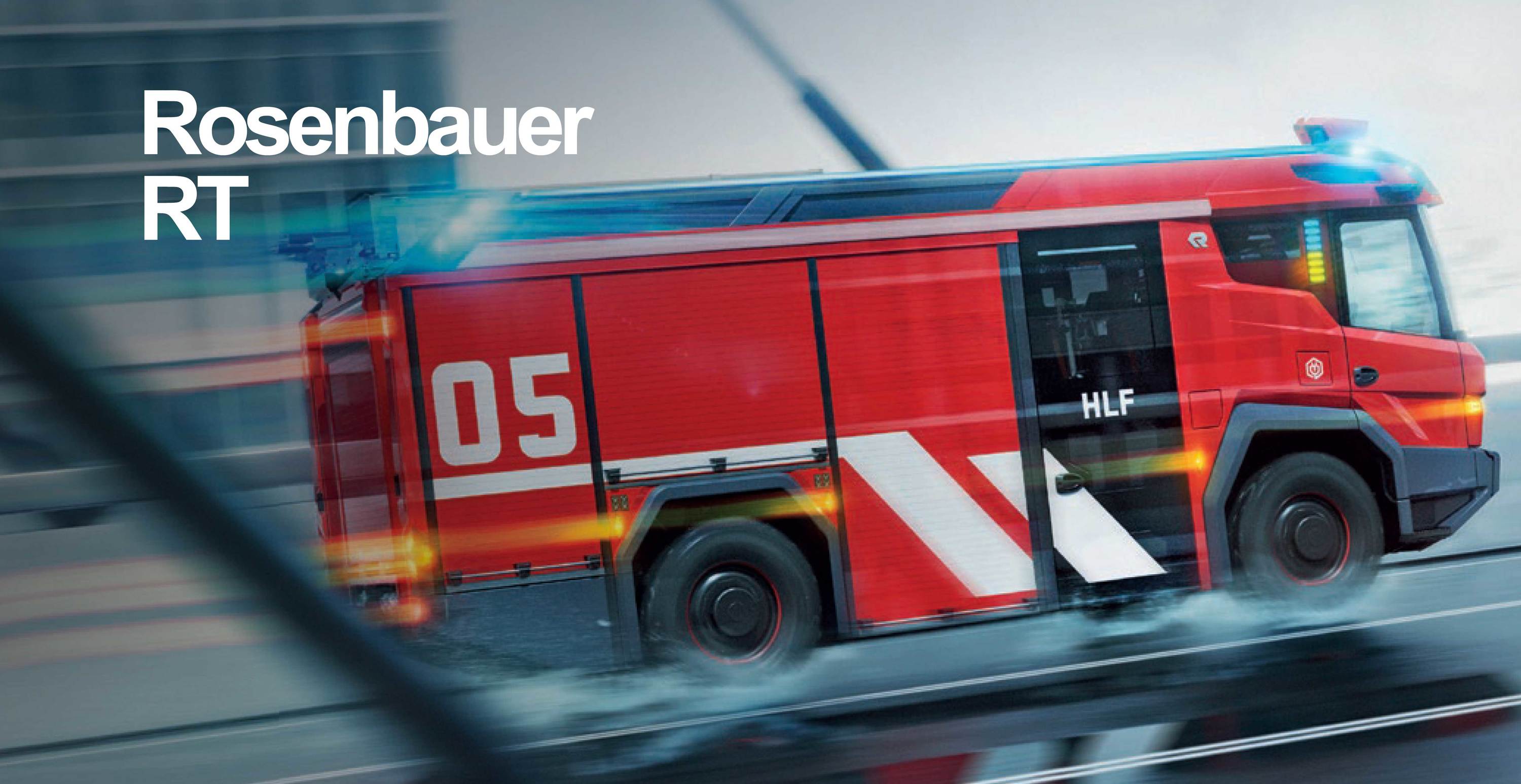
Revolutionary Technology
The RT – A Milestone

The Rosenbauer Hybrid System
The RT has a charging capacity of up to 150 kW, which means that the in-built batteries reach full efficiency again in almost no time. This means that purely electric and, therefore, an emission-free short-range operation is not a problem, even when used frequently in big cities. Due to the built-in range extender, the RT can also run on diesel when needed without any limitations.
Flexible Charging
The batteries of the RT can be charged with a three-phase alternating current (AC: 11 kW or 22 kW) from a high-voltage industrial socket without the need for a special adapter. For back-to-back deployments, direct current (DC) charging stations ensure minimal charging times. With a full power input of 150 kW, charging for just 15 minutes is enough to raise the level of the 100 kWh energy storage device from 50 % to 80 %.
How long does one battery charge last? Which jobs can be performed using only electronic systems?

The table below shows three typical operational scenarios with their average energy requirements. This shows how long the 100 kWh batteries can drive the RT through purely electric means and how much recharging is required for emission-free operation.

